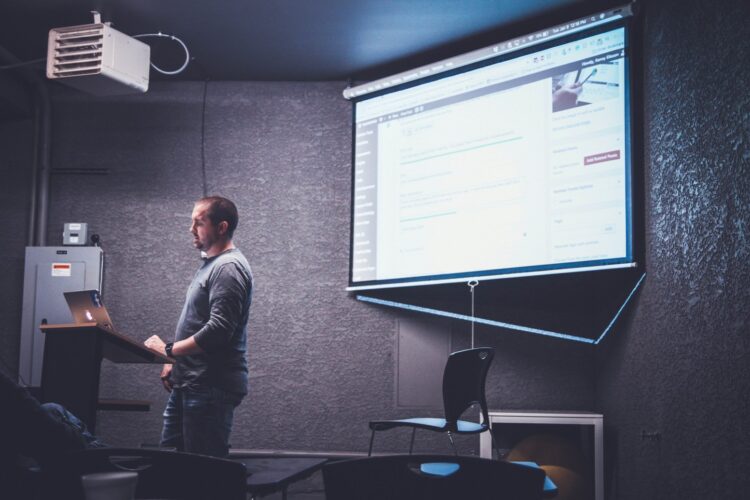The visual presentation is one of the best ways to introduce a wider auditorium with your research and present it in the best manner. Not everyone is born lecturers and it takes a lot of skill to do a perfect presentation. The slides you make will draw the attention and make the crowd listen to you.
There are few tricks that you can use to make the presentation appealing and the listeners engaged.
Table of Contents
1. Information layout

Before you start making a presentation, the thing about how will you layout the information you want to present. This mainly depends on the audience, but it is always good to do the research of the audience and adapt the information presented.
When planning, go through the work and make some logical wholes and divide the whole thing into pieces. It is always good to start with the introduction and layout of the work itself. Some like to put a content list for the audience to be familiar with the pace.
Plan to leave the section for the questions of the audience, and plan your time carefully. Sometimes, the presenter will use too much time on the introduction but just skim over the results and discussion. Also, do not forget about the conclusion, it should be cherry at the top of the whole presentation.
2. Visual appearance

Human beings are very visual and heavily rely on the sight, the more visually appealing something is, the more attention it will get. There are a few tricks that you can pull off in order to be unique and noticed.
Choose a program in which a presentation will be made. Some of the programs are compatible with one another, but some are not, so be sure that the format you are working in will be able to run on the presentation event. Also, if working online, make sure that the connection at the place is stable enough to run it smoothly.
Some organizations have a policy that the content cannot be brought on the external device such as the USB stick, so go through these technicalities before starting. The same goes for the available programs on the site, depending on the version they have, the presentation may not be able to run or it will be converted and everything can be mixed and moved.
Once you have picked the program in which you are working, it is time to choose the visual appearance of the presentation itself.
Do not underestimate the power of a good template! Every presentation starts with a template, so choose the one that will grab the attention, not overwhelm the audience and comply with the topic of the paper.
It is always good to stick to the saying, less is more and choose the template that is simple. A good place to start searching templates is templatemonster.com. It is okay to try out a few before deciding. Once set on the template, it is time to make the presentation.
Do not out to much text on the presentation, since it will distract the audience from what you are saying, and they will just read the text on the presentation without listening. A good strategy is to put bullet points to guide you through the topic instead of the blocks of text. Always have in mind that the audience has no idea what you would like to say, so even if you forget to say something, they will not notice.
The picture does speak more than words, so incorporate good pictures into the slides as well. It will give a spark of life to the slides and will assist in presenting. A good infographic is always a good choice. Do not be afraid to add different graphs as well, especially if they are going to help you present your work better.
There are some transition effects that can be added to the presentation, and here as well the rule of less is more applies. Too invasive transition effects can make the presentation appear too childish and if this is not something you would like to achieve it is better to stick to the very simple and plain transitions.
Do not forget that these effects will not work if you convert the presentation to pdf, so if you are relying on the effects, try to avoid this option.
3. Practical advice

If you are not very good at present, do not forget that practice makes it perfect. Stage fright is a serious thing, and even the big players have some needles and pins before stepping onto the stage.
Breathing exercises are a good thing to do before stepping out to the stage and talking. Additionally never forget that the audience is there because they want to hear about it, but they have no idea what you would like to say. So if you forget to mention something, stay chill and just get back to it if needed or skip it entirely if it is not crucial for the whole picture.
Try to rehearse before the real thing, just so you can see how it looks and especially if you have a specific time frame you need to fit in. Do not forget that most people talk faster when nervous, so it might happen you finish sooner than you have planned. It is good to practice with a clicker, a device that changes the slides so you gen be relaxed with this piece of technology.
Conclusion
Presenting is not easy but with a few of this advice, your presentation will be understood, remembered and will leave the audience with a good impression. Always remember that in visual appearance less is more and bullet points with few words are way better than blocks of text.
A good template should never be underestimated as well as good images and infographics. Practice will make it perfect, so go through the slides and many times needed to feel good about it. Being prepared will make you feel safe and do the presentation as best as you can.
